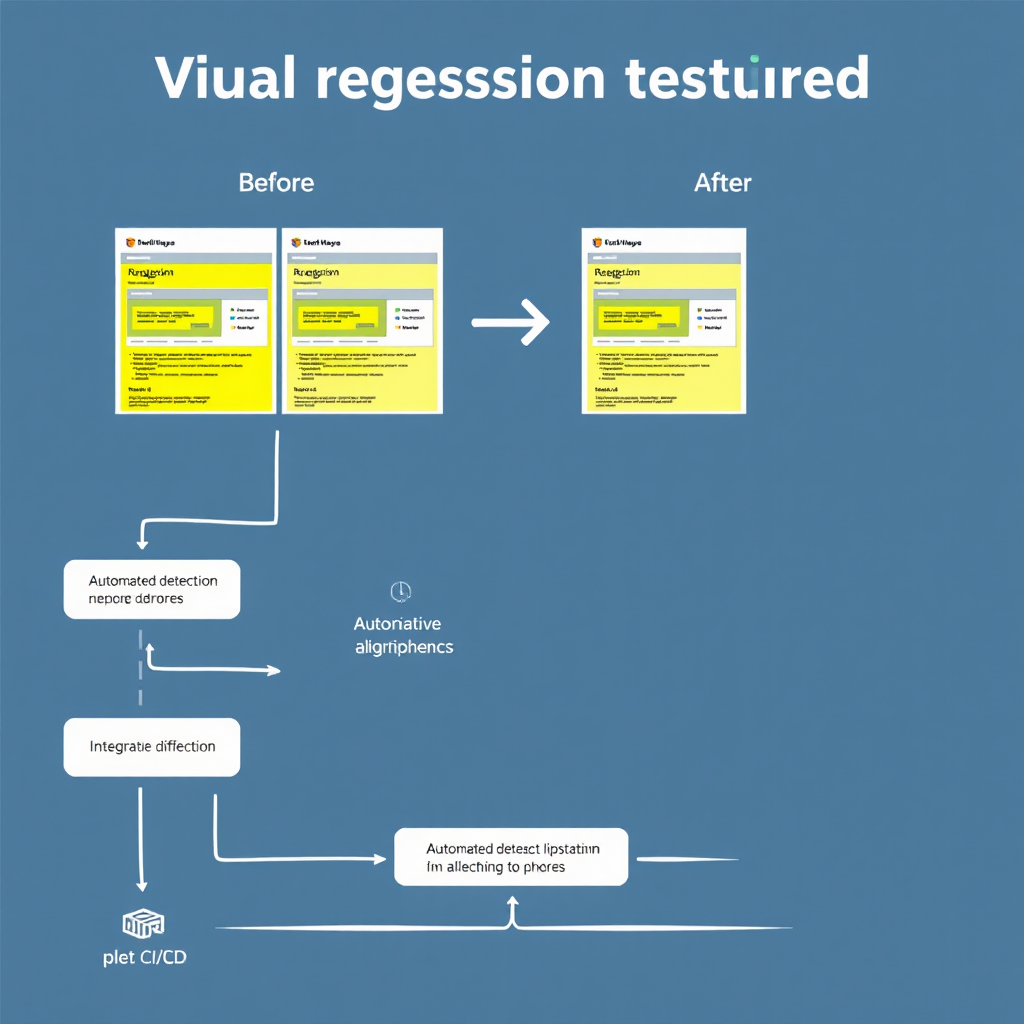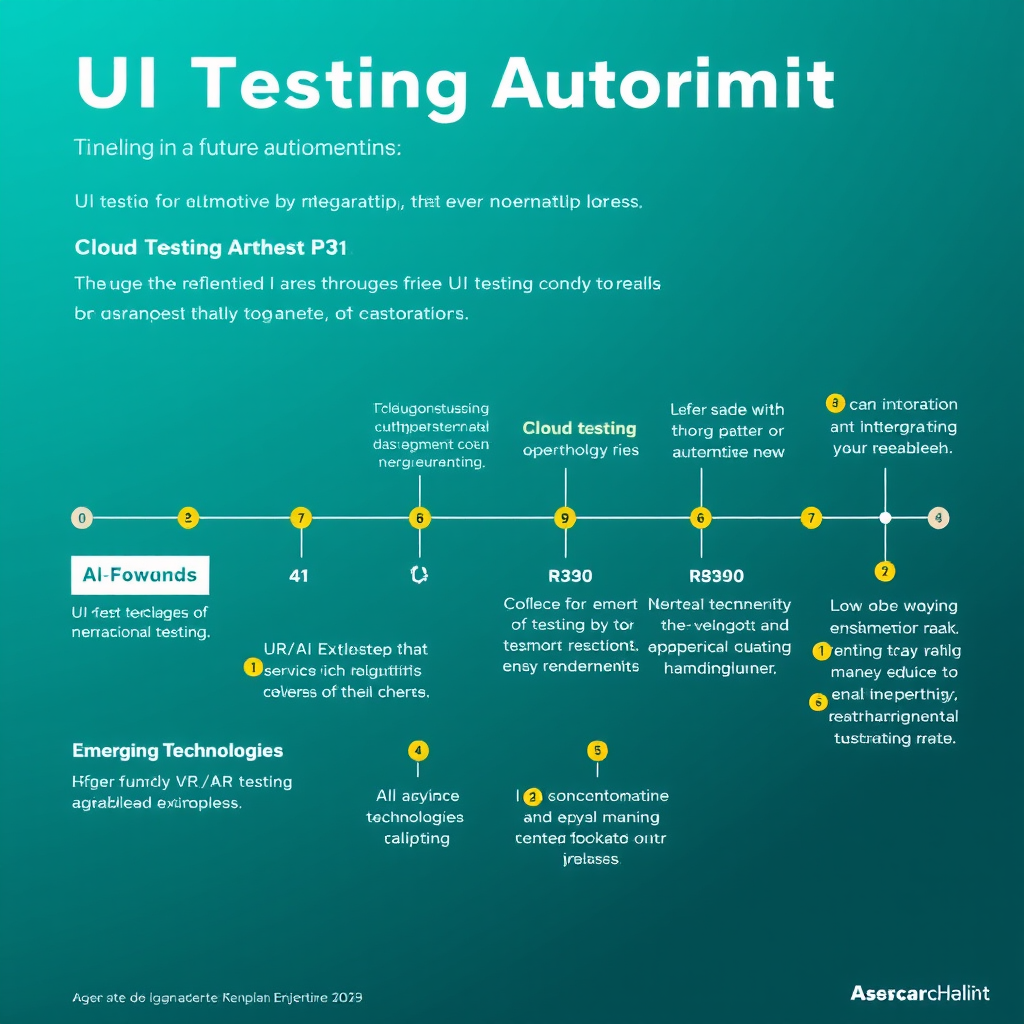Industry Report: UI Testing Automation Adoption Reaches 78% Among Enterprise Teams

A comprehensive survey of 2,500 enterprise development teams reveals that automated UI testing has reached a critical adoption milestone, with 78% of organizations now implementing some form of automated user interface testing in their development workflows.
The rapid growth in UI testing automation adoption represents a fundamental shift in how enterprise teams approach software quality assurance. This surge is primarily driven by the increasing complexity of modern web applications and the need for more efficient testing processes that can keep pace with accelerated development cycles.
Key Survey Findings
78%
Enterprise teams using automated UI testing
65%
Reduction in manual testing time
The survey data indicates that organizations implementing comprehensive UI testing automation report significant improvements in their development velocity and software quality metrics. Performance simulator tools have become essential components in modern testing strategies, enabling teams to validate user interface behavior under various load conditions.
Visual Regression Testing Trends

Visual regression testing has emerged as one of the most critical components of modern UI testing strategies. Our analysis shows that 89% of teams implementing automated UI testing now include visual regression checks as part of their standard testing pipeline.
The adoption of visual regression testing tools has been particularly strong among teams working with complex user interfaces that require pixel-perfect accuracy. These tools enable developers to catch unintended visual changes that might otherwise go unnoticed during traditional functional testing.
- Automated screenshot comparison across different browser versions
- Integration with existing CI/CD pipelines for continuous visual validation
- Advanced diff algorithms that can distinguish between intentional and accidental changes
- Support for responsive design testing across multiple viewport sizes
Cross-Browser Compatibility Challenges
Despite the significant progress in UI testing automation, cross-browser compatibility remains one of the most persistent challenges facing development teams. Our survey reveals that 72% of organizations still struggle with ensuring consistent user interface behavior across different browser environments.
The complexity of modern web applications, combined with the diverse ecosystem of browsers and devices, creates significant testing challenges. Organizations are increasingly turning to cloud-based testing platforms that provide access to extensive browser and device matrices for comprehensive compatibility validation.
Common Compatibility Issues
CSS Rendering
Inconsistent styling across different browser engines
JavaScript APIs
Varying support for modern web APIs
Performance
Different execution speeds and resource usage
AI-Powered Testing Tools Impact

The integration of artificial intelligence into UI testing workflows represents one of the most significant technological advances in software quality assurance. AI-powered testing tools are revolutionizing how teams approach test creation, maintenance, and execution.
Machine learning algorithms are now capable of analyzing user interface patterns and automatically generating test cases that cover edge cases that human testers might overlook. These logic modules can adapt to changes in the application interface, reducing the maintenance overhead traditionally associated with automated testing.
AI Testing Capabilities
Intelligent Test Generation
AI algorithms analyze application behavior and automatically create comprehensive test suites that cover both common user paths and edge cases.
- Automatic identification of interactive elements
- Generation of realistic user interaction sequences
- Dynamic adaptation to UI changes
Predictive Failure Analysis
Machine learning models can predict potential failure points in the user interface before they occur in production environments.
- Pattern recognition in historical test data
- Early warning systems for potential issues
- Risk assessment for deployment decisions
Development Workflow Integration
The successful adoption of UI testing automation depends heavily on seamless integration with existing development workflows. Teams that have achieved the highest levels of automation success report that integration with continuous integration and continuous deployment (CI/CD) pipelines is crucial for maintaining testing effectiveness.
Modern development teams are implementing sophisticated testing strategies that combine multiple approaches, including unit testing, integration testing, and comprehensive UI validation. The most successful implementations treat UI testing as an integral part of the development process rather than an afterthought.
Integration Strategies
- Pre-commit Testing: Automated UI tests run locally before code commits to catch issues early in the development process.
- Pull Request Validation: Comprehensive UI testing as part of the code review process ensures that changes don't introduce regressions.
- Staging Environment Testing: Full UI test suites run against staging environments to validate complete user workflows.
- Production Monitoring: Continuous UI monitoring in production environments to detect issues that may not appear in testing environments.
Future Outlook and Recommendations
The trajectory of UI testing automation adoption suggests that we are approaching a point where automated testing will become the standard rather than the exception. Organizations that have not yet implemented comprehensive UI testing strategies risk falling behind in terms of software quality and development velocity.

Based on current trends and technological developments, we anticipate several key developments in the UI testing automation space over the next 18 months. These include increased adoption of cloud-based testing platforms, more sophisticated AI-driven test generation, and better integration with emerging development frameworks.
Strategic Recommendations
For Organizations Starting Their Automation Journey
- Begin with critical user paths and gradually expand coverage
- Invest in team training and establish testing best practices
- Choose tools that integrate well with existing development workflows
- Implement performance simulator testing alongside functional testing
For Teams with Existing Automation
- Evaluate current test coverage and identify gaps
- Explore AI-powered testing tools for enhanced efficiency
- Implement comprehensive visual regression testing
- Optimize test execution times and resource usage
Conclusion
The 78% adoption rate of UI testing automation among enterprise teams represents a significant milestone in software development practices. This widespread adoption reflects the growing recognition that automated testing is essential for maintaining software quality in today's fast-paced development environments.
Organizations that embrace comprehensive UI testing strategies, including visual regression testing, cross-browser compatibility validation, and AI-powered testing tools, are positioning themselves for success in an increasingly competitive software landscape. The integration of these testing methodologies with existing development workflows creates a foundation for sustainable, high-quality software delivery.
As the technology continues to evolve, we expect to see even more sophisticated testing capabilities emerge, further reducing the barriers to implementing comprehensive UI testing automation. The future of software development will undoubtedly be shaped by these advances in automated testing technology.